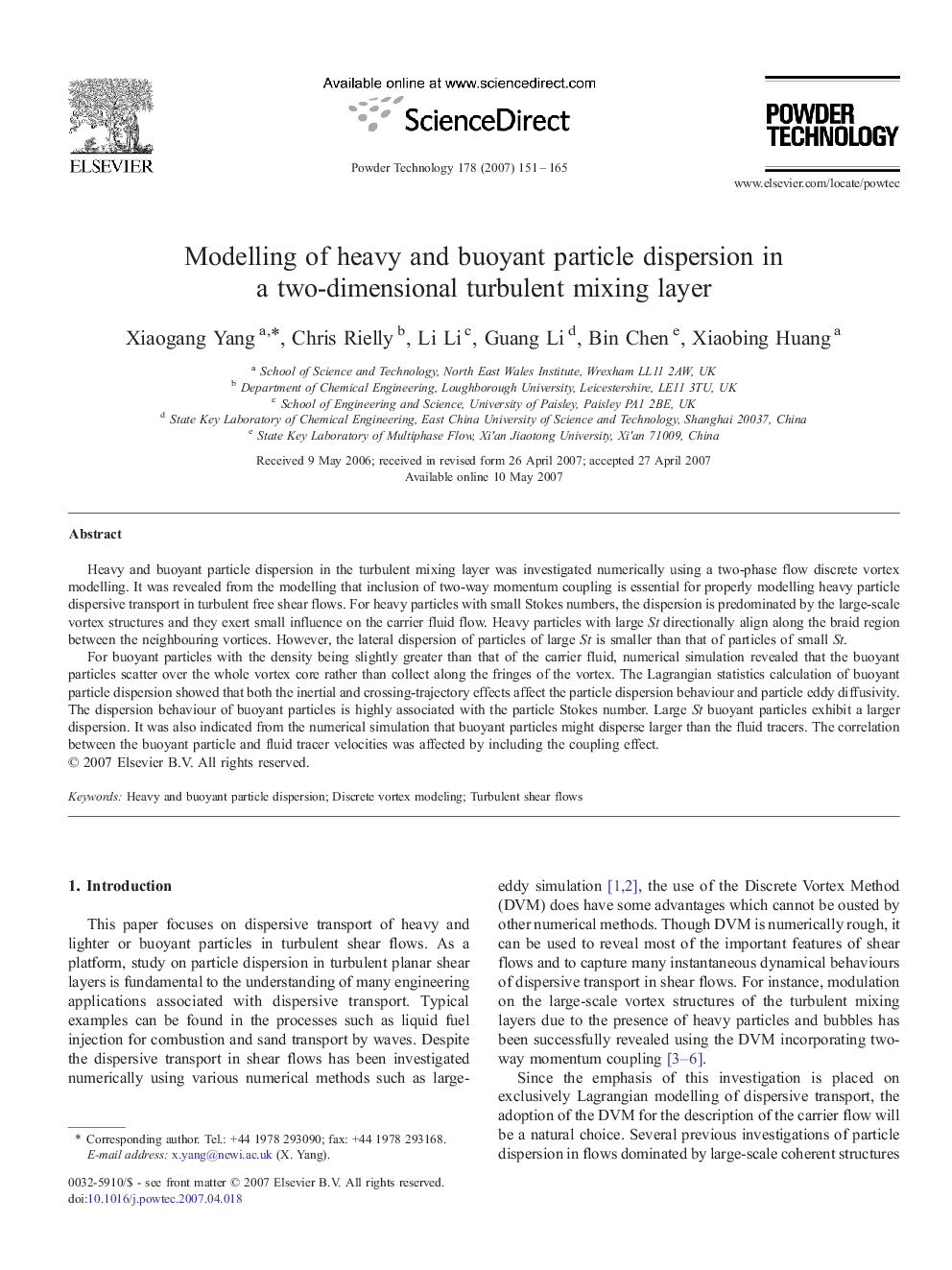| کد مقاله | کد نشریه | سال انتشار | مقاله انگلیسی | نسخه تمام متن |
|---|---|---|---|---|
| 239288 | 465812 | 2007 | 15 صفحه PDF | دانلود رایگان |

Heavy and buoyant particle dispersion in the turbulent mixing layer was investigated numerically using a two-phase flow discrete vortex modelling. It was revealed from the modelling that inclusion of two-way momentum coupling is essential for properly modelling heavy particle dispersive transport in turbulent free shear flows. For heavy particles with small Stokes numbers, the dispersion is predominated by the large-scale vortex structures and they exert small influence on the carrier fluid flow. Heavy particles with large St directionally align along the braid region between the neighbouring vortices. However, the lateral dispersion of particles of large St is smaller than that of particles of small St.For buoyant particles with the density being slightly greater than that of the carrier fluid, numerical simulation revealed that the buoyant particles scatter over the whole vortex core rather than collect along the fringes of the vortex. The Lagrangian statistics calculation of buoyant particle dispersion showed that both the inertial and crossing-trajectory effects affect the particle dispersion behaviour and particle eddy diffusivity. The dispersion behaviour of buoyant particles is highly associated with the particle Stokes number. Large St buoyant particles exhibit a larger dispersion. It was also indicated from the numerical simulation that buoyant particles might disperse larger than the fluid tracers. The correlation between the buoyant particle and fluid tracer velocities was affected by including the coupling effect.
Heavy and buoyant particle dispersion in the turbulent mixing layer was investigated numerically using a two-phase flow discrete vortex modelling. It was revealed from the modelling that inclusion of two-way momentum coupling is essential for properly modelling heavy particle dispersive transport in turbulent free shear flows. For heavy particles with small Stokes numbers, the dispersion is predominated by the large-scale vortex structures and they exert small influence on the carrier fluid flow. Heavy particles with large St directionally align along the braid region between the neighbouring vortices. However, the lateral dispersion of particles of large St is smaller than that of particles of small St.For buoyant particles with the density being slightly greater than that of the carrier fluid, numerical simulation revealed that the buoyant particles scatter over the whole vortex core rather than collect along the fringes of the vortex. The Lagrangian statistics calculation of buoyant particle dispersion showed that both the inertial and crossing-trajectory effects affect the particle dispersion behaviour and particle eddy diffusivity. The dispersion behaviour of buoyant particles is highly associated with the particle Stokes number. Large St buoyant particles exhibit a larger dispersion. It was also indicated from the numerical simulation that buoyant particles might disperse larger than the fluid tracers. The correlation between the buoyant particle and fluid tracer velocities was affected by including the coupling effect.Figure optionsDownload as PowerPoint slide
Journal: Powder Technology - Volume 178, Issue 3, 25 September 2007, Pages 151–165